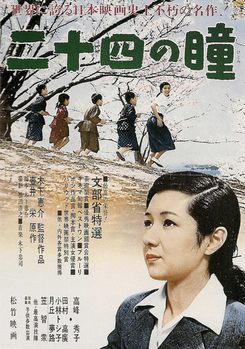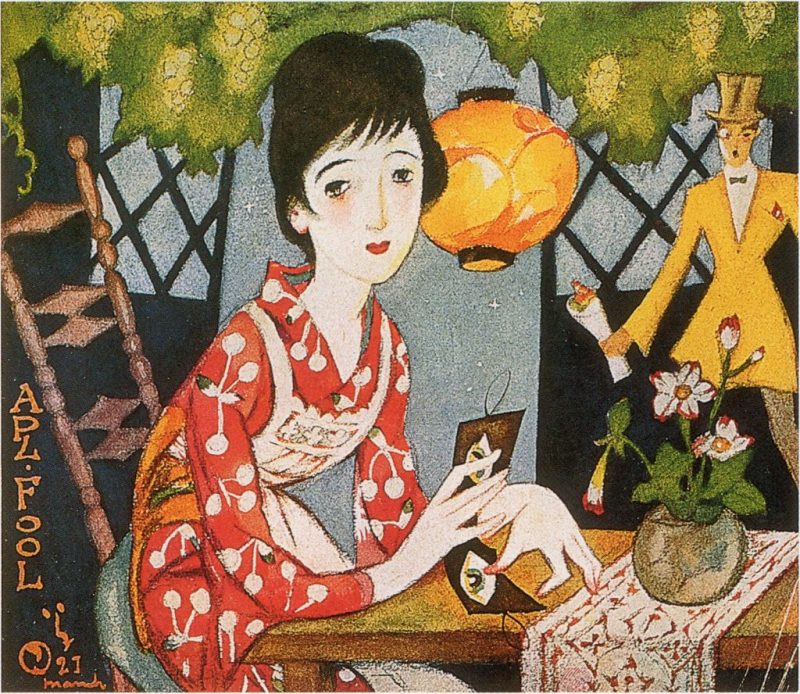Hamabe no uta
Ashita hamabe wo samayoeba
Mukashi no koto zo shinobaruru
Kaze no oto yo kumo no sama yo
Yosuru nami yo kai no iro yoYuube hamabe wo motooreba
Mukashi no hito zo shinobaruru
Yosuru nami yo kaesu nami yo
Tsuki no iro mo hoshi no kage mo*Hayachi tachimachi nami wo fuki
Akamo no suso mo nure hijishi
Yamishi ware wa sudeni iete
Hamano masago manago imawaLyricist:HAYASHI Kokei
Composer:NARITA Tamezou
in 1916
Song of the beach
In the morning, when wandering the beach,
I recalled the old days
From the sound of the wind and the appearance of the clouds,
Waves approaching and color of shellfish
When I was crawling on the beach in the evening,
I remembered the old nostalgic person
Wave approaching, wave coming away,
The color of the moon and the shadow of the stars
*Suddenly the wind blows and the waves break,
The hem of the girl’s red kimono got wet
I was completely cured of my illness,
The beach sand is as sweet as your own child

Beautiful Memories in Ancient Words
“Hamabe no uta” is a song that captures the melancholic mood of walking aimlessly along the shoreline while reminiscing about days gone by. One of the song’s greatest charms lies in the beauty of its lyrics, written in classical Japanese literary style. However, because it’s composed in archaic language, even modern Japanese speakers find it challenging to fully grasp the true meaning of its words. It has the same appeal as deciphering classical literature, and this linguistic barrier paradoxically adds to the song’s profound allure.
The lyrics were penned by HAYASHI Kokei, a Japanese literature scholar born in 1875. Interestingly, he had quite an unconventional background—he entered the Buddhist priesthood at a young age. However, driven by his passion for learning, he left the temple to pursue an academic career, becoming a teacher of Japanese and Chinese literature. Then, after turning 30, he made an unusual career change by enrolling in a music school, which was quite rare for someone of his age in those days.

A Beautiful Score Adorned by TAKEHISA Yumeji
When the musical score was published in 1918, its cover was graced by artwork from Takehisa Yumeji, renowned for his exquisite paintings of beautiful women. Yumeji’s elegant and lyrical artistic style harmonized perfectly with the melancholic atmosphere of “Hamabe no uta,” transforming the sheet music itself into a work of art. Indeed, this cover continues to be beloved by many to this day and is considered one of the iconic works of the Taisho Romantic movement.
The music itself is extraordinarily beautiful and lyrical, with a melodic line that possesses the delicacy to touch the heartstrings of the Japanese people. The melody, reminiscent of ocean waves and sea breezes, evokes nostalgic memories in listeners’ hearts, which explains why it continues to be cherished across generations.
The Mystery of the Lost Third Verse and Its Cinematic Legacy
“Hamabe no uta” originally consisted of three verses, according to historical accounts. However, the third verse that we might know today differs from what Kokei originally wrote. Remarkably, someone had altered the latter half of the lyrics without permission. When Kokei discovered this unauthorized change, he was reportedly furious, exclaiming, “This makes no sense!” Unfortunately, he couldn’t recall his original lyrics, and as a result, only the first and second verses are sung today. This episode about the phantom third verse remains one of the enduring mysteries surrounding the song.

Twenty-Four Eyes (1954) poster. By The poster art can or could be obtained from the distributor. Fair use, via Wikimedia Commons
Later, “Hamabe no uta” was effectively featured in the acclaimed film “Twenty-Four Eyes” (1954). This movie portrayed the tragedy of war through the bond between a new female teacher assigned to an impoverished village in the Setonaikai region and her students, depicting both the tragedy of conflict and the resilience of human spirit. When the song plays in the film, it resonates with the characters’ emotions and leaves a profound impact on audiences. In this way, the song transcended its individual appeal to gain greater cultural significance by connecting with other artistic works.






コメント